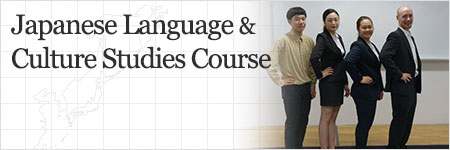Study Topics
Below are the final thesis topics completed so far by Japanese Language and Culture Studies Course students.
Presentations of research results are held upon completion of the course final thesis. Since 2007, final thesis presentations have been held under the theme of "how international students see Japan." The graduates, who studied between October 2016 and August 2017, made presentations on August 6, 2017 at Gifu University Satellite Campus. A large number of people came and listened to the presentations.


- Different Approach to Makeup between Japanese and Thai Women
- Behavior Pattern of Northern Europeans: What is Jante Law?
- Korean’s Image of Japan: Kanyangrok Record by Kang Hang
- Japanese Greeting Words and Comparison with Chinese


- Japanese Mask Culture – Why Japan is called “Mask Kingdom”
- Once upon a time, there were people called “Maori” – Analysis of Maori folk tale
- Why people pay for smartphone game apps?
- Men and Salt – Differences of faith in and expressions of salt in Europe and Japan
- Japan seen through the lens of Christianity – History of acceptance of Christianity in Japan
- Legacy of Samurai Warriors – Is the spirit of Samurai of Inazo Nitobe still alive among the Japanese youths?
- Challenges and Characteristics of Hairdressing in Japan and China
- Pronunciation Analysis of Korean spoken by Korean Residents in Japan – Comparison and analysis of explosives at word-initial consonants
- Treatment of Special Needs Students in Japan and Thailand – Welfare services between Gifu University and Kasetsart University
- Public Advertisement in Japan – Look into the transition of public advertisement with the passage of time
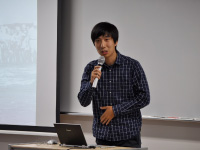
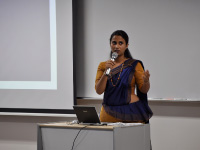
- Relationship between Korean Artists and the Pro Japanese in the Japanese Colonial Era – life of dancer Choe Seung-hui
- English Education for Elementary School Pupils – comparison between Sri Lanka and Japan
- Handkerchief – different ways of using handkerchief in China and Japan
- Current Status of Vietnamese Students in Japan
- Special Needs Education in Japan and Thailand – focus on education for elementary school pupils with special needs
- Future of Wagyu (Japanese Cattle) and WAGYU – why WAGYU is not on the Japanese market
- Elucidate Japanese Culture through Japanese Sake


- Japanese and Vietnamese women's social advancement –Change of the view towards working–
- Growth and decay of Korean and Japanese comedy –Cultural differences seen through mandan (a comic monologue) and manzai (stand-up comedy) –
- Disaster and multicultural society –The efforts of Gifu City and Gifu University–
- The comparison between Japanese and New Zealand gardens –Garden with a pond and dry garden style–
- The practice of ama* and the present situation –The case of ama in Shima region, Mie Prefecture–
- I give (kureru) you a book –The use of ‘yaru’ and ‘kureru’ in dialect–
- Does an apprentice training system exist in Japan? –Apprenticeships on Japanese and Swedish high school education–
- The comparison of onomatopee between Japanese and Chinese language –Using the example of “Kitchen” written by Banana Yoshimoto–
- Cultural Strategy for ukai, cormorant fishing, on the Nagara River –Can it be identified as World Intangible Cultural Heritage by UNESCO? –
- Manpower export from Vietnam and Training Program/Technical Intern Training Program
*Ama is professional female divers who go into the water mainly for food such as shellfish and seaweed.


- Understanding of Differences between Japan and China by Observing Chopsticks: History, Beliefs, Superstitions and Taboos
- Comparison of the Public Bath House Culture between South Korea and Japan
- Considering Omikuji Random Fortunes in Terms of Their Forms and People’s Awareness about Them
- Cultural Property Policy of Gifu City, Once a Home Base of Oda Nobunaga
- Problems Faced by Day-Care Centers and Kindergartens in Japan and Vietnam
- Intensive Adverbs Widely Used by Today’s Youth, Such as Meccha and Cho
- Frequency of Use and Visibility of Proverbs by Japanese and Thai Young People
- Native Language Education at Chinese Universities
- Comparing Current Facts about Marriage between Japan and South Korea with a Focus on Declining Marriage Rates
- Taking Another Look at Crows by Featuring Three-legged Crows


- Views toward Cats: Based on Utagawa Kuniyoshi’s Feline Portrayals
- A Linguistic Analysis of the Gifu Dialect and a Survey of Its Vocabulary and Usage
- Hikikomori in Japanese Society
- A Comparison of Korean and Japanese Perceptions of the Destiny of the Soul: A Study based on an Analysis of Issues pertaining to Cemeteries in Contemporary Japan
- The Yashagaike (Demon Pond) Legend and the Modern Era: Dragon God Faith from a Korean Perspective
- Kyoto Dialect: An Observation of the Trends of Kansai Dialects through the Example of the Kyoto Dialect
- Tokkotai in the Pacific War: The Realities and Legacies of Squadron Members
- English; Subject; Negation: Subject Word Usage by Japanese Speakers of English
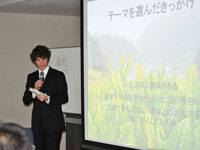

- Foreign Cultures Seen in TV Commercials—Comparison Between Japanese and Swedish TV Commercials
- Differences Between China and Japan in Terms of Acceptance of Western Food Culture—Focusing on the Creation of Ampan (Bean-paste Buns) in the Period of Cultural Enlightenment in Japan
- Study of Stereotyped Chinese People Portrayed by Japanese People of Today—Through Analysis of Japanese Manga and Anime
- Study of Child Rearing by Japanese and Chinese Men During the Day—Focusing on Japanese "Ikumen (Men Who Actively Participate in Parenting)"
- Developing Tea Brands in Gifu—Shirakawa Tea
- Differences Between Chinese and Japanese Lifestyles —Analysis of the Tatami Mat Lifestyle
- Children's Songwriter Misuzu Kaneko and Her Works—Acceptance of Her Works in China and Their Characteristics


- Comparison of waste disposal methods between Gifu City and Nanning City ― Focusing on separation for recycling and final disposition ―
- Comparison of souvenir cultures between Japan and South Korea ― Based on an awareness of souvenirs of people in both countries ―
- Attractiveness in China of animated films made in Japan ― Feeling out the future of the China International Cartoon & Animation Industry ―
- “Du-reformen” or “you-reform” ― The shift of the second person in languages derived from Germanic languages and in the Japanese language ―
- Understanding the times from naming styles ― Naming trends in Sweden and Japan ―
- Various aspects of katakana loan words ― Focusing on levels of understanding of persons who study the Japanese language ―
- Study on juvenile delinquency in China and Japan ― Focusing on atrocious crimes ―


- Japan and Sweden under the global financial crisis – focusing on zero-interest-rate policies –
- The youth and faith – focusing on religious events in Thailand and Japan –
- Attitude survey on "greatness" among college students between Japan and China
- Attitude survey on marriage and career after marriage among young generation between Japan and China – based on “good wife and wise mother” and “wise wife and good mother” -
- Ability to coin new words with Japanese Kanji characters – ability to form words –
- "Dream of the Red Chamber" and "The Tale of Genji" – Doubts on comparing the two works
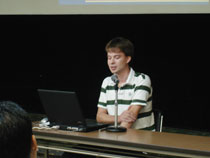

- An opinion on Japanese subtitles: Mysteries of free translation, alteration, and omission
- Kanji (Chinese characters) in Japanese language and their necessity
- The Economic livelihood of farmers in Thailand and Japan
- Labor issues of Chinese trainees & skill training employees: based on an investigation of conditions in Gifu Prefecture
- Food changes and its factors in modern China and Japan


- Birth of national sport: Comparison between China and Japan in tai chi and sumo
- The Anti-Vietnam War movement in Japan
- The influence and focus of TV media: A study of the "Natto Diet" broadcast in Aru Aru Daijiten II
- Japanese music power and its influence in Thailand
- Images of housewives from magazines for housewives in Japan and China
- The dynamics of bullying in schools
- A study on improvements in fighting games: A comparison between Japan and Western countries (especially Sweden)
- Brazilian soccer studied in J-league: Brazilian soccer and principles/100-year plan for the J-league
- Worldwide expansion of the world of Banana Yoshimoto: Looking at the Russian translation of Kitchen
- Footprints of outstanding haiku poets and poets: Great poets in Japan and Thailand
- The realities of the homeless in Japan, through volunteer activities
- Kamikaze corps
- Loan words in Japanese language: based on questionnaires
- Discussion of adapted stories of Ryunosuke Akutagawa originating in Chinese classics: A study of Toshishun
- Female labor and society: A comparison between Chinese and Japanese societies from the view of labor in the 1980s
- Changing values in youth
- Current coming-out of homosexuals in Japan and Thailand
- Drinking culture: Comparing Japan and Thailand
- A study of the image of geisha as captured in ‘Japonism’ in Sweden
- Women portrayed in Tokyo Love Story and Chinese women
- Food cultures in China and Japan: A comparative view of cooking features & constructions, thoughts on food, and ingredients & cooking methods
- Koreans in Japan: A history of discrimination against Koreans living in Japan
- Illegal immigrants in Japan and Australia
- Sumo wrestlers in the ring and wrestlers on grasslands: A comparison between Japanese and Mongolian sumo (bufu)
- A History of Make-up: The Cosmetics culture in Thailand and Japan
- American and Japanese Animation
- From the Middle Ages to Modern Times: Hideyoshi’s ordinances for unifying the country
- The Ainu and Aborigine: Natives and colonization
- Analysis of keigo (honorifics) and the current status/awareness of keigo among youth
- Mechanisms of memory and new kanji (Chinese character)-learning methods
- The language of youth in Japanese society
- Missionaries and the tea ceremony
- Animation movies by Disney and Hayao Miyazaki
- Festivals in Japan and China

